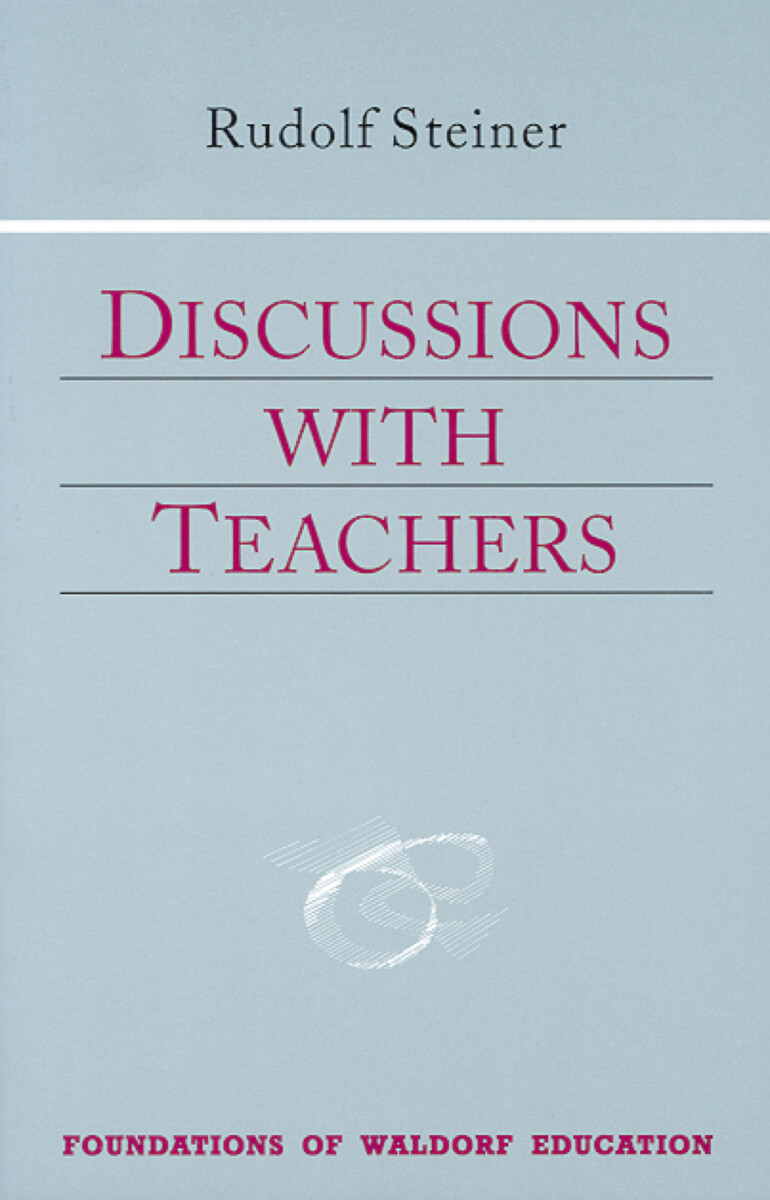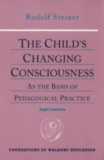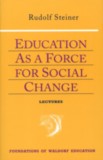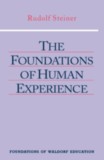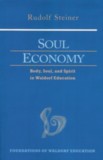Introduction by Craig Giddens
Translated by Catherine E. Creeger, Helen Fox and Maisie Jones
- Publisher
SteinerBooks - Published
1st June 1997 - ISBN 9780880104081
- Language English
- Pages 224 pp.
- Size 5.5" x 8.5"
15 discussions with teachers of the Stuttgart Waldorf School, Aug. 21 - Sept. 6, 1919; 3 lectures on the curriculum, Sept. 6, 1919 (CW 295)
“In spiritual science we divide the human being into ‘I’-being, astral body, etheric body, and physical body. In an ideal human being, the harmony predestined by the cosmic plan would naturally predominate among these four human principles. But in reality, this is not so with any individual. Thus, it can be seen that the human being, when given over to the physical plane, is not yet really complete; education and teaching, however, should serve to make the human being complete. One of the four elements rules in each child, and education and teaching must harmonize these four principles.” — Rudolf Steiner
For two weeks, prior to the opening of the first Waldorf school in Stuttgart, Rudolf Steiner intensively prepared the individuals he had chosen to become the first Waldorf teachers. At 9:00 a.m. each day, he gave the course now translated as Foundations of Human Experience; at 11:00 a.m., Practical Advice to Teachers; and then, after lunch, from 3:00 p.m. to 6:00 p.m., he held the informal "discussions" published in this book.
The tone is spontaneous and relaxed. Steiner does not prescribe specific methods but introduces topics and situations, offering guidelines and allocating practical assignments that are taken up and discussed in the next session. The discussions are filled with insights and suggestions in many different areas of teaching—history, geography, botany, zoology, form drawing, mathematics, and more.
Speech exercises are included. This edition also includes, for the first time in English, three important lectures on the curriculum, given the day just before the school opened.
These fifteen discussions constitute an essential part of the basic training material for Waldorf teachers.
Discussions with Teachers is a translation from German of Erziehungskunst. Seminarbesprechungen und Lehrplanvorträge (vol. 295 in the Bibliographical Survey, published by Rudolf Steiner Verlag, Dornach, Switzerland, 1961).
C O N T E N T S:
Introduction by Craig Giddens
1. August 21, 1919: The four temperaments, and the nature of the I, astral, etheric, and physical principles as their origin. Some characteristics of each and how to treat them. Polarity in the temperaments. Placement of children in the classroom. The “main” lesson. Sequence of fairy tales, fables, and Bible stories. A question about melancholics. Examinations better omitted.
2. August 22, 1919: The sanguine child. Attention. Temperaments in the Bible and in teaching music. Phlegmatic children and diet. Melancholics and their illusions. Treatment of cholerics. The temperament of different ages. Creative powers depend on preserving youth. Temperaments and occupations.
3. August 24, 1919: Telling stories and drawing for different temperaments. Describing animals. The question of “Cinderellas” in the class.
4. August 25, 1919: Posture and mathematics. The four rules of arithmetic in relation to temperaments. Plane geometry before solid. Designs and stories for different temperaments. Abnormalities of the temperaments. Response to the “Cinderellas.” A case of bad behavior.
5. August 26, 1919: Speech exercises begun. Temperaments and karma. Influence of father and mother. Change of temperaments through life. Temperaments in languages. Addressing improper behavior and “ringleaders.” The problem of “goody-goodies.”
6. August 27, 1919: Preparing children for poems and stories. Talks about dogs and about violets. How to deal with the “goody-goody” children. Children who have a “crush” on a teacher.
7. August 28, 1919: The fable of the boy, the horse, and the bull. History of Europe from eleventh to seventeenth centuries. The Crusades and their unexpected results. Quarrels between Greeks and Franks. Impact of superior civilizations of the East and of Greek Christianity on Europe. Some historians considered. The “goody-goody” children.
8. August 29, 1919: Fable of the oak and the fox. Children with no apparent talent for specific subjects. Diet for poor readers and writers. Cocoa. Eurythmy for children who are poor in arithmetic. Geography. Ambition should not be fostered. Children with poor observation skills and those who resent eurythmy. Effects of tea and coffee. Dull and bright children. Remembering forms through caricatures.
9. August 30, 1919: Botany. The nature of growth. Fertilization process not to be stressed for younger children. The plant’s relation to water (root), air (leaves), and warmth (blossom). Plants to be compared to soul, not to the body.
10. September 1, 1919: Human soul qualities revealed in plants. Sleeping, dreaming, and waking in the relation between Earth and plants. Polarity of tree and fungus. The theorem of Pythagoras.
11. September 2, 1919: Phrenology discounted. Plants are not the senses of the Earth. Medical plant lore of medieval mystics. Plants classified by development of root, stalk, leaf, etc. Plants related to different ages of childhood.
12. September 3, 1919: Sex education. Maps and geography. Angles and areas.
13. September 4, 1919: Algebra to precede the teaching of areas. Introduction of algebra by calculating rates of interest. A shop for the second grade. Rates of movement. Copernicus and Bessel.
14. September 5, 1919: More about rates of interest and algebra. Negative numbers, powers, and roots. Formulas. The building of towns in Europe. Concrete chronology through demonstrating the generations. Towns originated as markets, later fortified. Change of consciousness in fifteenth century. Historians Buckle and Lecky recommended. Lamprecht. Freytag. H. S. Chamberlain. Socialist historians good for facts. Observing the movements of Sun and planets. Egyptian drawing. Animal-headed men. Physical strength of Egyptians; their mythology.
15. September 6, 1919: Lemniscate and human organs. Invasions of Roman Empire by Celts, etc., due to desire for gold. Invasion in relation to cultivated and undeveloped land (Goths and Franks). Christianity and pagan cults. Overcoming difference of ability. Foreign and classical languages. Reports and grades. Closing remarks: what the teacher should be.
First Lecture on the Curriculum, September 6, 1919, a.m.:
Second Lecture on the Curriculum, September 6, 1919, a.m.:
Third Lecture on the Curriculum, September 6, 1919, p.m.:
Appendix: Speech Exercises in German
Further Reading
Index
Rudolf Steiner
Rudolf Steiner (b. Rudolf Joseph Lorenz Steiner, 1861–1925) was born in the small village of Kraljevec, Austro-Hungarian Empire (now in Croatia), where he grew up. As a young man, he lived in Weimar and Berlin, where he became a well-published scientific, literary, and philosophical scholar, known especially for his work with Goethe’s scientific writings. Steiner termed his spiritual philosophy anthroposophy, meaning “wisdom of the human being.” As an exceptionally developed seer, he based his work on direct knowledge and perception of spiritual dimensions. He initiated a modern, universal “spiritual science” that is accessible to anyone willing to exercise clear and unbiased thinking. From his spiritual investigations, Steiner provided suggestions for the renewal of numerous activities, including education (general and for special needs), agriculture, medicine, economics, architecture, science, philosophy, Christianity, and the arts. There are currently thousands of schools, clinics, farms, and initiatives in other fields that involve practical work based on the principles Steiner developed. His many published works feature his research into the spiritual nature of human beings, the evolution of the world and humanity, and methods for personal development. He wrote some thirty books and delivered more than six thousand lectures throughout much of Europe. In 1924, Steiner founded the General Anthroposophical Society, which today has branches around the world.


